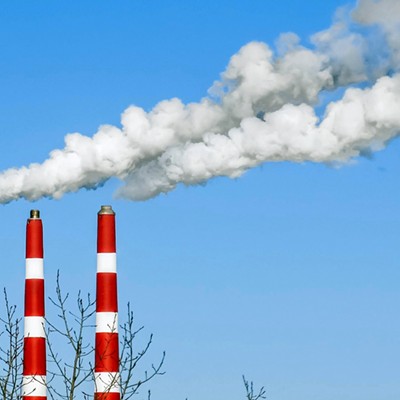Without charge, here’s an idea for the folks who promote tourism in Halifax. Maybe what we could do down on the waterfront is put up one of those signs, like they have at factories and on construction sites, proclaiming “This Harbour Has Been Explosion Free for 88 Years.” Without a doubt it would become a photo-op hotspot, and small print at the bottom could then direct the curious visitor to the Maritime Museum and various landmarks related to the big blast.
The death and destruction caused by the collision of the Mont Blanc and the Imo is a touchstone in the history of the city in large part because it remains such a singular and enormously tragic event. These days, suffering another disaster the likes of the Halifax explosion is hard to envision. Despite the inherent dangers of living in a city that is home to a navy port, nine-devastation-free decades is a comforting record to stand on. In many ways, December 6, 1917 is ancient history. For one thing, thanks to navigational equipment and radio communication, guess work (“go left…no, go right…no, go left”) is no longer one of the factors involved in getting two vessels to navigate the harbour at the same time. And in 2005, allowing the citizenry to gather along the shoreline while a burning ship stuffed with munitions drifts unattended across the water wouldn’t be considered a prudent safety measure. Some lessons are learned the hard way.
But while 88 years of experience and technological advancement have no doubt made the harbour safer, there does exist a threat to the city related to the harbour that no one in 1917 could imagine, and very few Haligonians today ever pause to consider.
Witness the visit to the city last June of the French aircraft carrier the Charles de Gaulle. While no one in their right mind would suggest that building a nuclear power-plant within a couple kilometres of downtown would be a good idea, few people outside of groups such as the Halifax Peace Coalition raised any concerns about a nuclear-powered warship spending the weekend. While the morning radio jocks loaded up on quips about 3,000 French sailors streaming ashore, and various merchant associations celebrated the economic activity to be generated by the French invasion, the question “what if?” was seldom heard to be asked.
In the late 1980s the Canadian government was seriously considering the acquisition of up to a dozen nuclear-powered submarines (likely goaded into it by jokes regarding the fact there were more submarines at the water park of the then-new West Edmonton Mall than in the Canadian Navy.) Nuclear reactors on ships power steam turbines that provide propulsion directly or generate electricity for propulsion. The big advantage over diesel engines is more power, and thus more speed, particularly for submarines, and the long life of the reactor core means vessels can go years without refueling. Most military vessels have one small nuclear reactor burning highly enriched uranium, although some Russian vessels have two.
Prior to the acquisition of a nuclear-powered fleet, the Canadian government ordered a study looking into the possible damage that could occur should a fire or other accident involving the release of radioactive material happen on one of the subs while in the port of Esquimalt, just outside of Victoria, BC. The study, carried out by W. Jackson Davis, a professor of biology in the Nuclear Policy Program at the University of California at Santa Cruz, produced some alarming conclusions. Using the computer technology of the day, Davis studied the effects of the “incineration of a single nuclear warhead in a ship-board fire” as well as a “hypothetical nuclear-reactor accident aboard a ship berthed at Esquimalt.” In the first case, Davis concluded the plutonium concentration in the resulting “cloud” would exceed US Nuclear Regulatory Commission guidelines for air contamination up to 10,000 times, while ground contamination from the resulting fallout would exceed NRC guidelines by up to one million times. Latent cancer fatalities (occurring as a result of exposure to radioactive dust particles) could climb as high as 3,000, with an equal number of fatalities from subsequent severe genetic defects. Davis also reported that ground contamination from fallout could be expected as far as 50 kilometres from the accident site.
In the second scenario, simulating a four-hour reactor fire, Davis concluded that up to 400 cancer fatalities, and an equal number from subsequent genetic defects, could occur relatively soon after the accident, within five kilometres of the accident site. With continued habitation of the city, Davis found that up to 1,500 more casualties could be expected per year “declining to half within approximately 30 years.”
In addition to the fatalities, Davis concluded: “The most significant impact, however, could be economic. US government studies indicate that decontamination could cost tens of billions of dollars and take months to complete, during which time the local economy would be largely terminated. These cost estimates omit the on-site cost of clean up, and they omit “indirect” losses from the termination of local economies and ripple effects on provincial and national economies. The ecological and economic impacts of such an accident on surrounding salt water bodies have not been considered here, but could also be significant.”
Cleanup of radioactive dust is a painstaking process. Every square metre of the affected area needs to be sandblasted or covered with some type of “binding agent” to collect the dust, all of which then would need to scraped up and taken away to be buried or sealed in concrete vaults. Because some radioactive elements can quickly seep into many types of porous building materials (particularly in rainy conditions), those buildings would have to be demolished and the rubble also hauled away to be buried (a technique to draw the radioactive material out of the buildings is still in the experimental phase). To complete the process, the entire area is washed down, and remaining radioactive dust allowed to run off and become diluted in local waterways. All of this needs to be done while taking steps to protect the cleanup workers themselves. In the 20 years since the Chernobyl nuclear-reactor meltdown (admittedly a much larger disaster than would occur from a nuclear-powered vessel reactor fire), more than 600,000 people have been involved in cleanup and reconstruction, and more than 150 communities within 30 kilometres of the reactor site have remained abandoned.
In the end, of course, the Canadian government never did purchase the subs. What they did was continue with international agreements that would see foreign nuclear-powered vessels stopping at Canadian ports (Halifax and Esquimalt as well as Nanoose Bay on Vancouver Island) as many as 25 times per year. Not all of these receive the fanfare of the Charles de Gaulle visit, and in fact most are never announced to the public. Reports are that within the last couple of months, both the British and Americans have had nuclear-powered subs docked at CFB Shearwater. And while both countries insist it is not their policy to actually carry nuclear weapons while tooling around on the high seas during routine deployments, the old “national security” (theirs, not ours) bugaboo means we can’t confirm that, and simply have to take their word for it.
To allay any fears, the Canadian government points out that during three decades of hosting nuclear-powered vessels in Canadian ports, there has never been an accident resulting in the release of radioactive material. In any discussion on the subject, the Department of National Defence is careful to use language such as “small chance” and “extremely remote.”
Yet accidents do happen. The fatal fire aboard the HMCS Chicoutimi submarine in October of 2004 was the first of three reported fires in the past year involving Halifax-based vessels, including one that broke out on the HMCS Toronto while in port last June, and most recently onboard the HMCS Windsor while at sea in October. And while the Canadian military often takes a beating over such incidents, the American record is no better. Last January, a US nuclear-powered/nuclear-weapons-capable submarine ran aground in 500 feet of water in the south Pacific, killing one crewmember and injuring 23 others (unlike in Canada after the Chicoutimi fire, the story made the US news for about two days, and there was little-to-no public outcry). And in November of 2003, it was reported a nuclear missile was damaged while being unloaded from a US sub at a base near Seattle, something the US Navy would neither “confirm nor deny,” as they would neither confirm nor deny if the sub even had nuclear weapons onboard.
Which brings us back to the question of “what if?” If an incident were to occur, the first line of defence for the citizens of Halifax is the Canadian Navy itself. At all three Canadian ports, Nuclear Emergency Response Teams, or NERTs, are in place. Under the direction of an officer trained in nuclear physics, the NERT officials monitor the air and water for increases in radioactivity in the vicinity of the nuclear powered vessel, and a specially equipped vehicle patrols city streets, carrying out the same task.
Navy spokesperson Mike Bonin explains that various aspects of the system are rehearsed on a regular basis, and once a year the entire operation is tested by an outside agency, a company based in Ottawa called International Safety Research. Although test scores are not routinely released to the public, several years ago reports surfaced that the Halifax-based NERT, while receiving an overall grade of “satisfactory,” received unsatisfactory marks in a number of areas, primarily in communication with civilian authorities. Asked how NERT has done on more recent testing, Bonin simply says, “if we did not pass the test, we would not be allowed to host these nuclear-powered vessels.”
The actual responsibility of looking out for Haligonians falls to the HRM Emergency Measures Organization, operating under what is called the Port of Halifax Nuclear-Powered Vessel Nuclear Emergency Response Operational Coordination Protocol (say that three times fast). Municipal Emergency Measures coordinator Barry Manuel says that once notified of an incident by the Navy, the protocol allows for a liaison officer to be sent to the Navy headquarters to monitor the situation, and also brings in the resources of the HRM Fire and Rescue Hazardous Materials unit. Manuel himself has been involved in several of the annual tests of the NERT system, and says past problems of communication have been solved, crediting the provincial communications system of a dedicated emergency radio frequency and much-improved equipment.
If an incident were to occur, Manuel says all normal emergency procedures would fall into place, including a general notification to the public through media channels. Evacuation of the city would be an option, although, Manuel says, not the immediate option.
“Sheltering in place is always the first step, as with any noxious gas situation, until it can be determined if it’s safer to evacuate,” he says, adding that for purposes of the EMO, the municipality is divided into three regions, with downtown designated as Region 2. “At that point we’d go to our evacuation plan, which takes into account what we know to be the population of each region, the demographics and what special care people might need.”
That is, unlike in certain southern cities, the old and poor won’t be left to fend for themselves.
Of course, simply denying nuclear-powered vessels access to Halifax and surrounding area would eliminate any risk, but given the decades-old policy of cooperation between Canadian and foreign governments on the matter, that is unlikely to happen. Even a symbolic “nuclear-free” designation for HRM (or for that matter, Nova Scotia) would carry very little weight, as jurisdiction for the Naval Dockyards and CFB Shearwater fall under federal control. In 1999, the BC government tried to block federal expropriation of the Nanoose Bay seabed for the purpose of US submarine missile testing, only to be rebuffed by the Supreme Court. As researcher Stacy Chappel of the Vancouver Island Public Interest Research Group pointed out to a public inquiry on US-Canada relations held last year at the University of Victoria: “In BC we became a nuclear-free zone by act of legislation…and yet the provincial government has proved incapable of enforcing the policy when it comes to Nanoose Bay, or the US nuclear ships that visit Victoria’s harbour.”
So until the day comes when the feds change their way of thinking, it falls to the citizens of HRM to take it upon themselves to recognize the danger that can exist in our waters, to demand to know when that danger is present and to be aware of what is being done to ensure our safety.
As we should have learned from events of 1917, gawking from the shoreline can be very unwise.

















